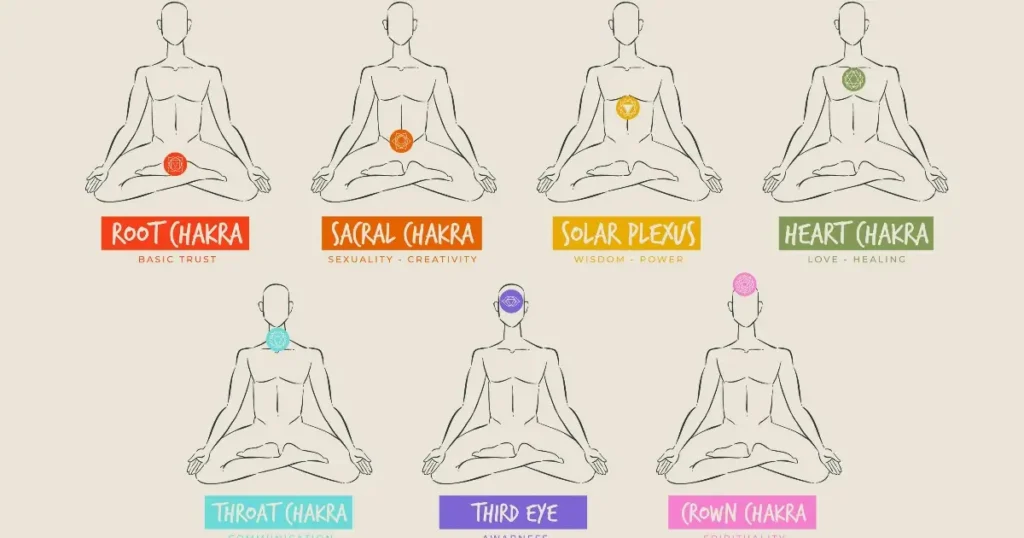The Power of Breath: Exploring Breath Awareness Meditation

Welcome to the calming practice of breath awareness meditation—a profound method for achieving mental clarity and emotional stability. This guide introduces an ancient yet accessible technique that anchors you amid life’s challenges by focusing on the natural rhythm of your breathing. Breath awareness meditation doesn’t require specialized equipment or extraordinary settings; it simply utilizes the power of your breath to foster a deep sense of calm and resilience.
In the following chapters, we will explore the fundamental aspects of this meditation practice. You will learn to observe each breath with intention and without judgment, enhancing your self-awareness and emotional regulation.
This mindful approach to breathing serves as a tool to clear your mind and soothe your emotions, transforming your interaction with the world around you. Let’s dive into the world of breath control to see how it can refine your daily routine and enrich your existence.
The Basics of Breath Awareness Meditation

Definition of Breath Awareness Meditation
Breath awareness meditation, also known as mindful breathing, is a meditative practice that focuses on the act of breathing. The essence of this technique is to observe the breath as it enters and exits the body, fostering a heightened state of present-moment awareness. Practitioners learn to notice each breath without attempting to alter it, which can lead to increased mindfulness, reduced stress, and improved emotional and physiological responses.
Historical Context and Cultural Significance
The roots of breath awareness meditation stretch deep into history, appearing in various forms across many cultures. In ancient India, it was integral to early Yoga and ascetic practices, described in Vedic texts and later detailed in the Yoga Sutras of Patanjali as a path to spiritual enlightenment. Similarly, in Buddhist traditions, mindfulness of breath is a fundamental practice used to develop both concentration and insight, featured prominently in the Anapanasati Sutta as a method taught by Buddha himself.
This practice also appears in other religious and spiritual contexts, such as in Taoism and Christian mysticism, where the focus on the breath is used as a method to attain a deeper spiritual connection and inner silence. Across all these traditions, the simple act of breath awareness has been revered not only for its accessibility but also for its profound ability to connect the mind, body, and spirit in harmonious alignment.
Through centuries, breath awareness meditation has maintained its relevance, adapting to contemporary needs and continuing to benefit millions of practitioners worldwide by providing a practical tool for coping with the challenges of modern life. This historical versatility highlights its enduring value and universal appeal, transcending cultural and temporal boundaries to remain a cornerstone of personal and spiritual growth.
Preparing for Meditation

The environment in which you meditate can significantly affect the quality of your session. Choose a quiet, clean space where interruptions are minimized. Ideal conditions include a room with soft lighting and minimal noise distractions.
Some prefer an element of nature, like a small plant or a window with a view of the garden, to enhance the serenity of the space. The goal is to create a peaceful setting that facilitates relaxation and focus.
Beginning a practice of breath awareness meditation involves engaging in a series of simple, intentional steps that foster a deep sense of mindfulness and tranquility.
Here’s how to begin this enriching journey:
| 1 | Finding a Comfortable Position | Begin by sitting in a comfortable position. This could be on a chair, cushion, or on the floor, ensuring your back is straight but not tense. |
| 2 | Closing the Eyes | Gently close your eyes to help turn your attention inward. This reduces external distractions and makes it easier to concentrate on your breathing. |
| 3 | Observing the Breath | Pay attention to your natural breathing pattern. Notice the air entering through your nostrils, filling your lungs, and then leaving your body. Focus on the sensation of the breath as it moves in and out. |
| 4 | Using a Mental Note | To help maintain focus, use a mental note like “inhaling” when you breathe in and “exhaling” when you breathe out. This anchors the mind in the present moment. |
| 5 | Returning to the Breath | Whenever your mind wanders, gently redirect your attention back to your breath without judgment. This is a core part of the practice. |
| 6 | Maintaining a Relaxed Focus | Keep a relaxed but attentive focus on your breath. Avoid forcing your breath; let it flow naturally. |
| 7 | Incorporating Body Awareness | Expand your awareness to include bodily sensations. Feel the rise and fall of your chest or the sensation of relaxation spreading through your body. |
| 8 | Setting a Time Limit | Start with a manageable duration, such as 5 to 10 minutes, and increase the time as you become more comfortable with the practice. |
| 9 | Ending the Session | Conclude your meditation with a moment of gratitude or a gentle stretching of your body. Slowly open your eyes and take a few deep breaths before rising. |
| 10 | Regular Practice | The benefits of meditation increase with regular practice. Aim to meditate daily, even if it’s for a short period. |
The length of your meditation session can vary depending on your experience level and schedule. Beginners might start with 5 to 10 minutes, gradually increasing the time as they become more accustomed to the practice. It’s better to have a shorter, daily practice than to meditate for long periods occasionally.
Consistency leads to progress in meditation, so choose a duration that allows you to be regular and comfortable with your practice. Through these steps, you will find that breath awareness meditation not only enhances your immediate sense of calm but also contributes significantly to your long-term emotional and mental health. Keep this practice a regular part of your life, and watch as the benefits permeate all aspects of your being.
The Benefits of Breath Awareness Meditation

Physical Benefits
Breath awareness meditation offers several physical benefits that contribute to overall health and well-being. Regular practice can lead to deep relaxation, not just during the meditation but extending into daily life. It helps lower heart rate and blood pressure, which are beneficial for heart health. Improved breathing techniques can enhance lung capacity and respiratory efficiency, which is particularly valuable for those with breathing disorders or those involved in physical activities. Furthermore, engaging regularly in this practice can boost the immune system by reducing stress-related hormones.
Mental Benefits
On the mental health front, breath awareness meditation is a powerful tool for enhancing cognitive functions. It sharpens focus and improves concentration, making it easier to manage daily tasks and responsibilities. Regular meditation significantly reduces stress levels, providing a sense of calm and tranquility that helps in handling challenging situations more effectively. Additionally, it fosters better emotional regulation, helping individuals respond to emotional stimuli with greater calmness and less reactivity.
Long-term Impacts on Well-Being and Mindfulness
The long-term benefits of breath awareness meditation are profound and lasting. Engaging in this practice consistently can alter the way you perceive and interact with the world, leading to increased mindfulness. This heightened state of awareness enhances your capacity to live in the present moment, appreciate life, and connect deeply with others. Over time, practitioners often report a greater sense of peace, improved personal relationships, and a deeper understanding of themselves. Moreover, this sustained practice can lead to a resilient disposition towards life’s ups and downs, fostering an enduring sense of inner strength and stability.
Final Thoughts

Breath awareness meditation is more than just a technique; it is a pathway to profound transformation. As we have explored, the practice offers remarkable benefits for both the body and mind, from enhancing physical health to nurturing mental well-being and emotional resilience. Its simplicity allows anyone, regardless of age or experience, to begin and maintain a practice that can profoundly impact the quality of their life.
Embracing breath awareness meditation means committing to a journey of self-discovery and growth. It encourages a deeper connection with the present moment, enabling a richer, more fulfilled experience of life. Whether you’re seeking relief from stress, improvement in concentration, or a deeper sense of peace, this practice holds the potential to deliver significant and lasting benefits.
As you continue or begin your practice, remember that the journey of meditation is unique to each individual. There is no right or wrong way to experience the breath; there is only your way. By returning to your breath, again and again, you cultivate a space of calm within yourself that is always accessible, no matter what challenges you face externally. Let this practice be your anchor and your guide as you navigate the complexities of life with newfound clarity and calm.

















